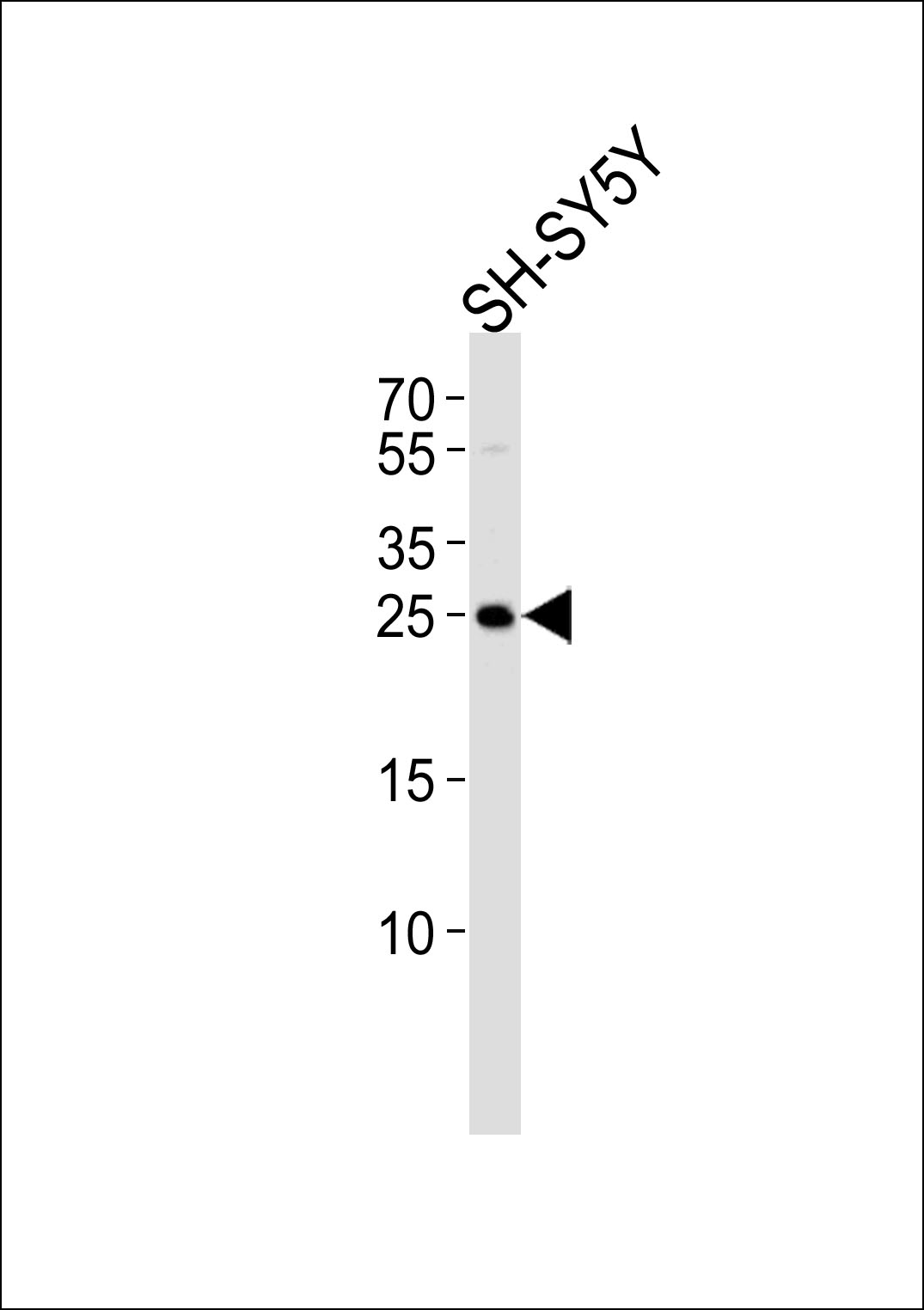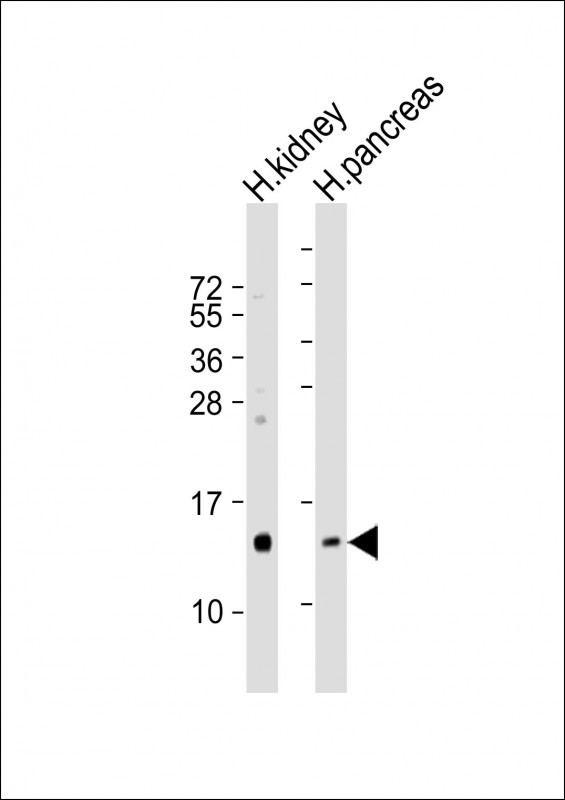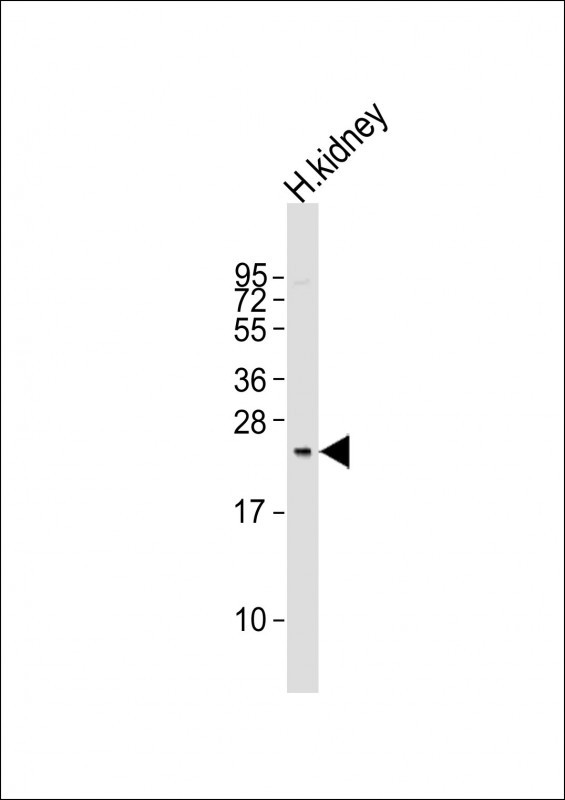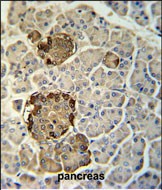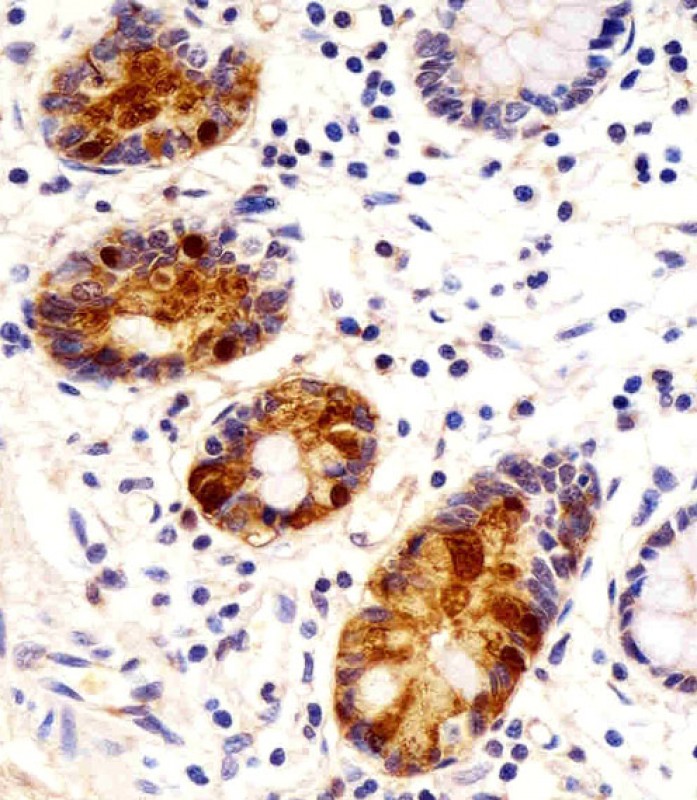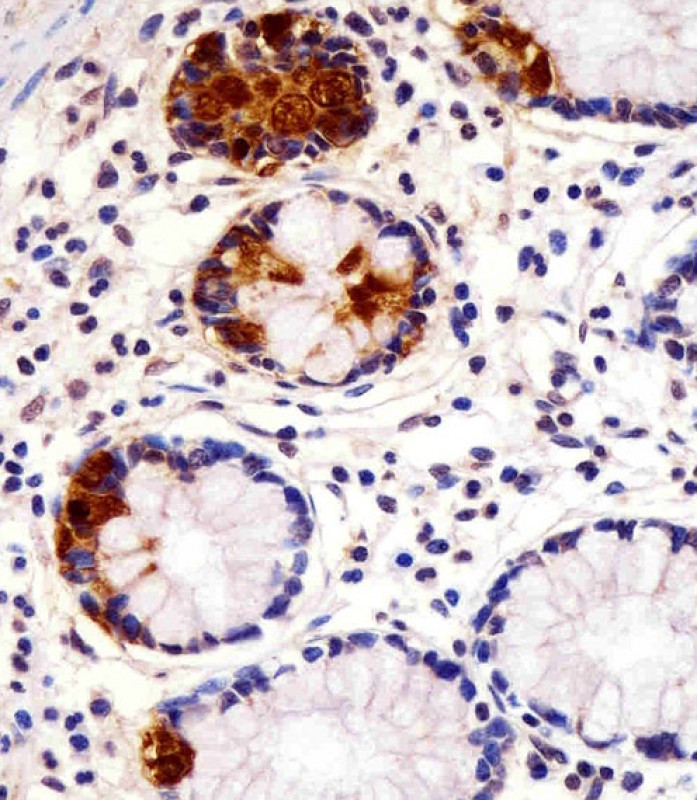REG3G Antibody (Center)
Affinity Purified Rabbit Polyclonal Antibody (Pab)
- SPECIFICATION
- CITATIONS: 8
- PROTOCOLS
- BACKGROUND

Application
| WB, FC, IHC-P, E |
|---|---|
| Primary Accession | Q6UW15 |
| Other Accession | NP_001008388.1 |
| Reactivity | Human |
| Host | Rabbit |
| Clonality | Polyclonal |
| Isotype | Rabbit IgG |
| Calculated MW | 19330 Da |
| Antigen Region | 89-116 aa |
| Gene ID | 130120 |
|---|---|
| Other Names | Regenerating islet-derived protein 3-gamma, REG-3-gamma, Pancreatitis-associated protein 1B, PAP-1B, Pancreatitis-associated protein IB, PAP IB, Regenerating islet-derived protein III-gamma, REG III, Reg III-gamma, Regenerating islet-derived protein 3-gamma 165 kDa form, Regenerating islet-derived protein 3-gamma 15 kDa form, REG3G, PAP1B |
| Target/Specificity | This REG3G antibody is generated from rabbits immunized with a KLH conjugated synthetic peptide between 89-116 amino acids of human REG3G. |
| Dilution | WB~~1:2000 FC~~1:10~50 IHC-P~~1:25 E~~Use at an assay dependent concentration. |
| Format | Purified polyclonal antibody supplied in PBS with 0.09% (W/V) sodium azide. This antibody is prepared by Saturated Ammonium Sulfate (SAS) precipitation followed by dialysis against PBS. |
| Storage | Maintain refrigerated at 2-8°C for up to 2 weeks. For long term storage store at -20°C in small aliquots to prevent freeze-thaw cycles. |
| Precautions | REG3G Antibody (Center) is for research use only and not for use in diagnostic or therapeutic procedures. |
| Name | REG3G (HGNC:29595) |
|---|---|
| Synonyms | PAP1B |
| Function | Bactericidal C-type lectin which acts exclusively against Gram-positive bacteria and mediates bacterial killing by binding to surface-exposed carbohydrate moieties of peptidoglycan. Restricts bacterial colonization of the intestinal epithelial surface and consequently limits activation of adaptive immune responses by the microbiota. |
| Cellular Location | Secreted {ECO:0000250|UniProtKB:P42854}. Cytoplasm {ECO:0000250|UniProtKB:P42854} |
| Tissue Location | Predominantly expressed in pancreas, where it may be restricted to exocrine pancreas. Moderate expression levels in testis and weak in heart, kidney and placenta |

Provided below are standard protocols that you may find useful for product applications.
Background
REG3G might be a stress protein involved in the control of bacterial proliferation (By similarity).
References
Taylor-Fishwick, D.A., et al. J. Histochem. Cytochem. 56(2):183-191(2008)
Hamblet, N.S., et al. Pancreas 36(1):1-9(2008)
Hillier, L.W., et al. Nature 434(7034):724-731(2005)
Laurine, E., et al. Biochim. Biophys. Acta 1727(3):177-187(2005)
If you have used an Abcepta product and would like to share how it has performed, please click on the "Submit Review" button and provide the requested information. Our staff will examine and post your review and contact you if needed.
If you have any additional inquiries please email technical services at tech@abcepta.com.














 Foundational characteristics of cancer include proliferation, angiogenesis, migration, evasion of apoptosis, and cellular immortality. Find key markers for these cellular processes and antibodies to detect them.
Foundational characteristics of cancer include proliferation, angiogenesis, migration, evasion of apoptosis, and cellular immortality. Find key markers for these cellular processes and antibodies to detect them. The SUMOplot™ Analysis Program predicts and scores sumoylation sites in your protein. SUMOylation is a post-translational modification involved in various cellular processes, such as nuclear-cytosolic transport, transcriptional regulation, apoptosis, protein stability, response to stress, and progression through the cell cycle.
The SUMOplot™ Analysis Program predicts and scores sumoylation sites in your protein. SUMOylation is a post-translational modification involved in various cellular processes, such as nuclear-cytosolic transport, transcriptional regulation, apoptosis, protein stability, response to stress, and progression through the cell cycle. The Autophagy Receptor Motif Plotter predicts and scores autophagy receptor binding sites in your protein. Identifying proteins connected to this pathway is critical to understanding the role of autophagy in physiological as well as pathological processes such as development, differentiation, neurodegenerative diseases, stress, infection, and cancer.
The Autophagy Receptor Motif Plotter predicts and scores autophagy receptor binding sites in your protein. Identifying proteins connected to this pathway is critical to understanding the role of autophagy in physiological as well as pathological processes such as development, differentiation, neurodegenerative diseases, stress, infection, and cancer.


